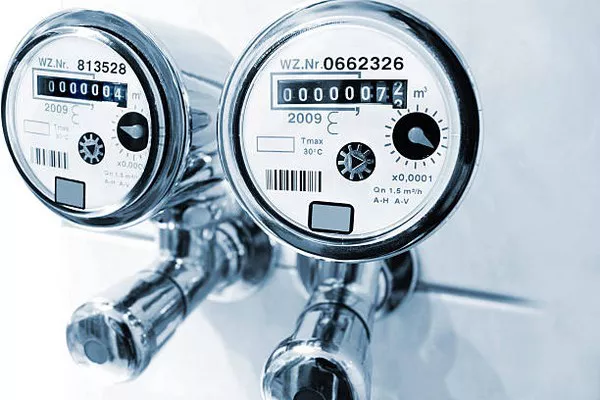In healthcare settings, accurate and precise delivery of medical gases, such as oxygen, is of paramount importance. Oxygen flow meters play a pivotal role in this regard, ensuring that patients receive the right amount of oxygen needed for their specific medical condition. This article delves into the intricate workings of oxygen flow meters, shedding light on their design, functionality, and importance in healthcare.
The Role of Oxygen Flow Meters
Oxygen flow meters are indispensable devices used in medical and clinical settings to control and measure the flow rate of oxygen delivered to patients. They serve as critical tools for healthcare professionals, ensuring that oxygen therapy is administered accurately, safely, and effectively. Oxygen, a vital element for sustaining life, is often required to manage a wide range of medical conditions, from respiratory distress to anesthesia support. To meet the diverse needs of patients, oxygen flow meters come in various types, with each designed for specific applications and settings.
The Basic Design
Oxygen flow meters feature a simple yet effective design that allows for precise control of oxygen flow. The basic components of an oxygen flow meter include a flow tube, a control valve, and a pressure gauge.
Flow Tube: The flow tube is a transparent, cylindrical chamber with a tapered shape, where the gas flows. It is often calibrated with markings or numbers to indicate the flow rate in liters per minute (LPM). As the oxygen flows through the tube, the healthcare professional can visually monitor the flow rate.
Control Valve: The control valve is a critical component that allows the user to adjust the flow rate according to the patient’s requirements. By turning the valve, the user can control the size of the orifice, thus regulating the flow of oxygen.
Pressure Gauge: Many oxygen flow meters are equipped with pressure gauges that display the pressure within the system. This provides an additional layer of safety and ensures that the oxygen supply remains stable.
How Oxygen Flow Meters Work
Oxygen flow meters operate on the principle of pressure-compensated flow control. The main goal is to provide a constant, reliable flow of oxygen to the patient. Here’s how they work:
Gas Source: Oxygen flow meters are typically connected to a gas source, such as an oxygen cylinder or a central oxygen supply system. The gas source provides a constant supply of oxygen under pressure.
Pressure Reduction: The high-pressure oxygen from the source is initially reduced to a lower, more manageable pressure using a pressure-reduction valve. This step is crucial to prevent excessive flow and ensure the safety of the patient.
Flow Control: Once the pressure is reduced, the oxygen flows into the flow meter through the control valve. As the user adjusts the control valve, the size of the orifice changes, allowing more or less oxygen to pass through. This adjustment is what determines the flow rate.
Reading the Flow Rate: The flow rate is indicated on the flow tube, where the user can read the calibrated markings. The position of the float, which is inside the flow tube, changes with the flow rate. The float rises higher in the tube as the flow rate increases and drops lower as the flow rate decreases. This provides a visual representation of the flow rate in LPM.
Pressure Monitoring: In some models, a pressure gauge is included to monitor the pressure within the system. This ensures that the oxygen supply remains stable and that any fluctuations are promptly addressed.
Types of Oxygen Flow Meters
There are several types of oxygen flow meters available, each designed to cater to specific healthcare applications. Some common types include:
Thorpe Tube Flow Meters: These are the most basic and commonly used oxygen flow meters. They consist of a tapered glass tube with calibrated markings and a float. The position of the float indicates the flow rate.
Bourdon Gauge Flow Meters: Bourdon gauge flow meters use a flexible metal tube that straightens as the oxygen flow increases. This straightening is used to move an indicating needle that displays the flow rate on a scale.
Rotameter Flow Meters: Rotameter flow meters utilize a tapered tube with a float. As the gas flow rate changes, the float position adjusts accordingly, providing a visual flow rate reading. Rotameters are often used in anesthesia and critical care applications.
Digital Flow Meters: Modern digital flow meters are equipped with electronic displays and sensors to provide precise flow rate measurements. These meters offer high accuracy and can be used in various clinical settings.
Importance in Healthcare
Oxygen flow meters are integral to healthcare for several reasons:
Patient Safety: Accurate flow control is crucial to ensure that patients receive the right amount of oxygen. Under- or over-administration of oxygen can have serious health consequences.
Customized Care: Different medical conditions require specific oxygen flow rates. Oxygen flow meters allow healthcare professionals to tailor therapy to individual patient needs.
Monitoring Oxygen Levels: Flow meters with pressure gauges help monitor oxygen supply levels, ensuring a constant and stable source of oxygen.
Anesthesia and Critical Care: In surgical and critical care settings, oxygen flow meters play a pivotal role in ensuring that patients receive adequate oxygen levels during procedures and while under anesthesia.
Cost-Effective Treatment: By providing the right oxygen flow rates, healthcare facilities can minimize oxygen waste and reduce costs associated with oxygen therapy.
Conclusion
Oxygen flow meters are simple yet essential devices that play a crucial role in healthcare, ensuring that patients receive the appropriate oxygen therapy. By precisely controlling and measuring oxygen flow, these devices contribute to patient safety, customized care, and cost-effective treatment. Understanding how oxygen flow meters work is paramount for healthcare professionals to provide effective and efficient medical care.

